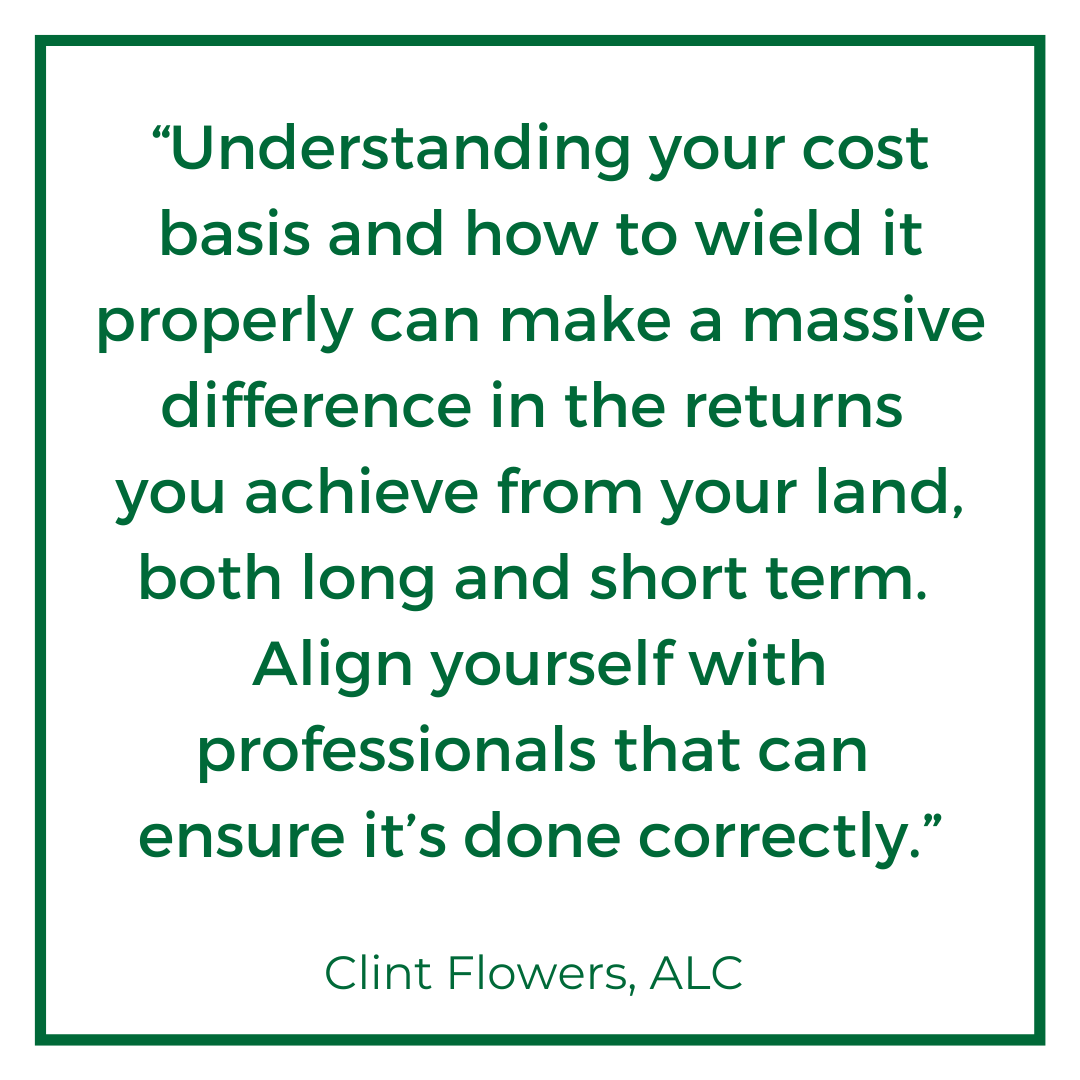If you're lucky enough to inherit or purchase timberland, you've already made a great investment in your future. Timberland is a valuable asset that can provide a range of benefits, from recreation to timber harvesting, and even wildlife habitat conservation. However, owning and managing timberland requires some knowledge and effort. Here are a few first considerations if you buy or inherit timberland.
Get to know your property
The first step in managing your timberland is getting to know the property. Walk around the land and observe the features, including the type of trees, soil type, and terrain. Make note of any natural resources, such as water sources or minerals, and identify any areas that may be suitable for timber harvesting or other uses. You may want to consider hiring a professional forester or consulting with a land management expert to help you assess the property and develop a management plan.
Understand both your land and timber basis
How do you determine what your basis is in your land and your timber? Have both the land and timber appraised effective of the date of death of the grantor. The value of the land and timber at that time is the basis.
value of the land and timber at that time is the basis.
When a landowner inherits real estate, they get a step up in basis to current market value. This is significant for two reasons:
1. It determines your tax liability (capital gain) if you sell.
For example, because you received a step up in basis, if the basis is worth $3,000 per acre and you sell it for that or more, you only pay taxes on the gains above $3,000 per acre.
2. Timber basis is depletable.
If your inherited land has $1,000 per acre of timber on it when you inherit it, you can deplete (harvest) that amount without paying taxes on it because there is no capital gain. All you did was take $1,000 per acre in timber and turn it into $1,000 in cash, so there isn’t a profit. Once you harvest over that amount, you’re subject to applicable long- or short-term capital gains rates but until then, it’s “tax free” income because it’s technically just a recovery of capital using the math mentioned above.
.png?ver=1YTNvlxhncKxDA8mBJl1NA%3d%3d)
Work with a tax professional to understand the tax benefits for your specific land.
Develop a management plan
Once you have a good understanding of your timberland, it's important to develop a management plan. This plan should outline your goals for the property, such as timber production, wildlife habitat conservation, or recreation. It should also include a timeline for achieving these goals, as well as an inventory of the timber on the property and a plan for harvesting and replanting.
Harvest timber responsibly
Timber harvesting can be an important source of income for timberland owners, but it's important to do it responsibly. Sustainable forestry practices ensure that the forest is managed in a way that preserves its ecological health and productivity, while also providing economic benefits. Harvesting timber should be done in accordance with a management plan that considers the long-term health of the forest, as well as environmental regulations and best practices.
Consider conservation options
If you're interested in conserving wildlife habitat or preserving the natural beauty of your timberland, there are several options available. One option is to establish a conservation easement, which is a legal agreement that restricts certain uses of the property to protect natural resources. Another option is to work with a land trust or conservation organization to protect the land through conservation ownership or other means. These options can provide tax benefits and other incentives for landowners who are committed to conservation.
Get involved in local forestry organizations
There are many local and national organizations that support sustainable forestry practices and offer resources and education for timberland owners. Getting involved in these organizations can provide networking opportunities, access to educational materials, and a voice in forestry policy and regulation. Some examples of forestry organizations include the Society of American Foresters, the Forest Stewardship Council, and the American Forest Foundation.
Stay up to date on industry trends
The timberland industry is constantly evolving, with new technologies, regulations, and market trends shaping the way landowners manage their forests. Staying up to date on these trends can help you make informed decisions about your timberland and take advantage of new opportunities. You may want to subscribe to industry publications, attend conferences and seminars, or consult with a forestry expert (you can select “Timberland” under Property Specialties at RLI’s Land Consultant search) to stay abreast of the latest developments.
Consider alternative uses for your land
While timber harvesting can be a lucrative source of income, there are other ways to generate revenue from your timberland. For example, you could lease the land for recreational purposes, such as hunting or fishing, or even for renewable energy projects, such as wind or solar power. You could also consider using the land for non-timber forest products, such as mushrooms or berries, or for agritourism, such as a farm stay or farm-to-table restaurant.
Consult with a Land Professional
Owning timberland can be a profitable investment but requires careful planning and management. If you have recently bought or inherited timberland, it is crucial to understand the property's current condition, the market demand for timber, and the local regulations. Proper land management and regular timber harvesting can generate income and increase the land's value over time. Working with a professional land consultant or seeking advice from your local RLI Chapter can provide valuable insights into maximizing your investment's potential. By taking these steps, you can make the most of your timberland investment and enjoy the benefits of owning this unique and valuable asset for generations to come.
Thank you to timberland expert and land broker, Clint Flowers, ALC for his contributions to this article on land and timber basis and tax implications. Consumers may reach out for further guidance at gcoffice@nationalland.com or 855.NLR.LAND.